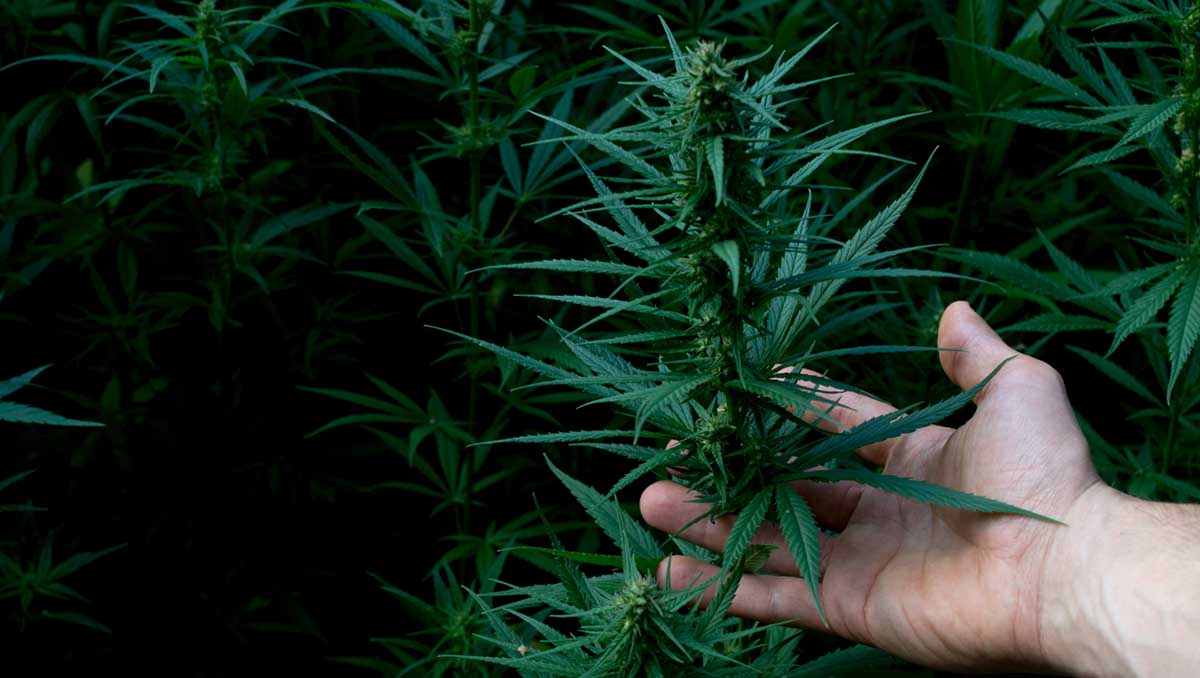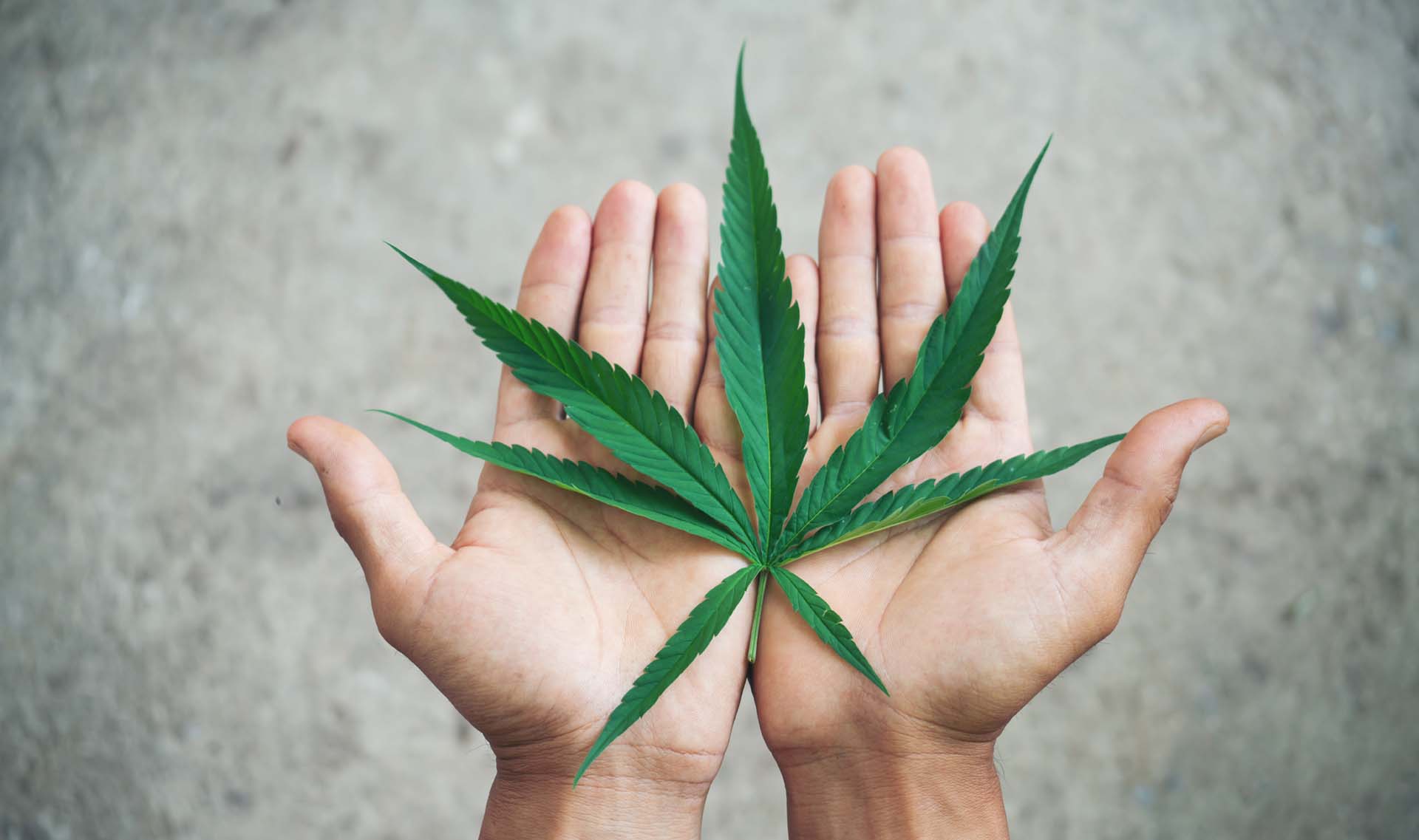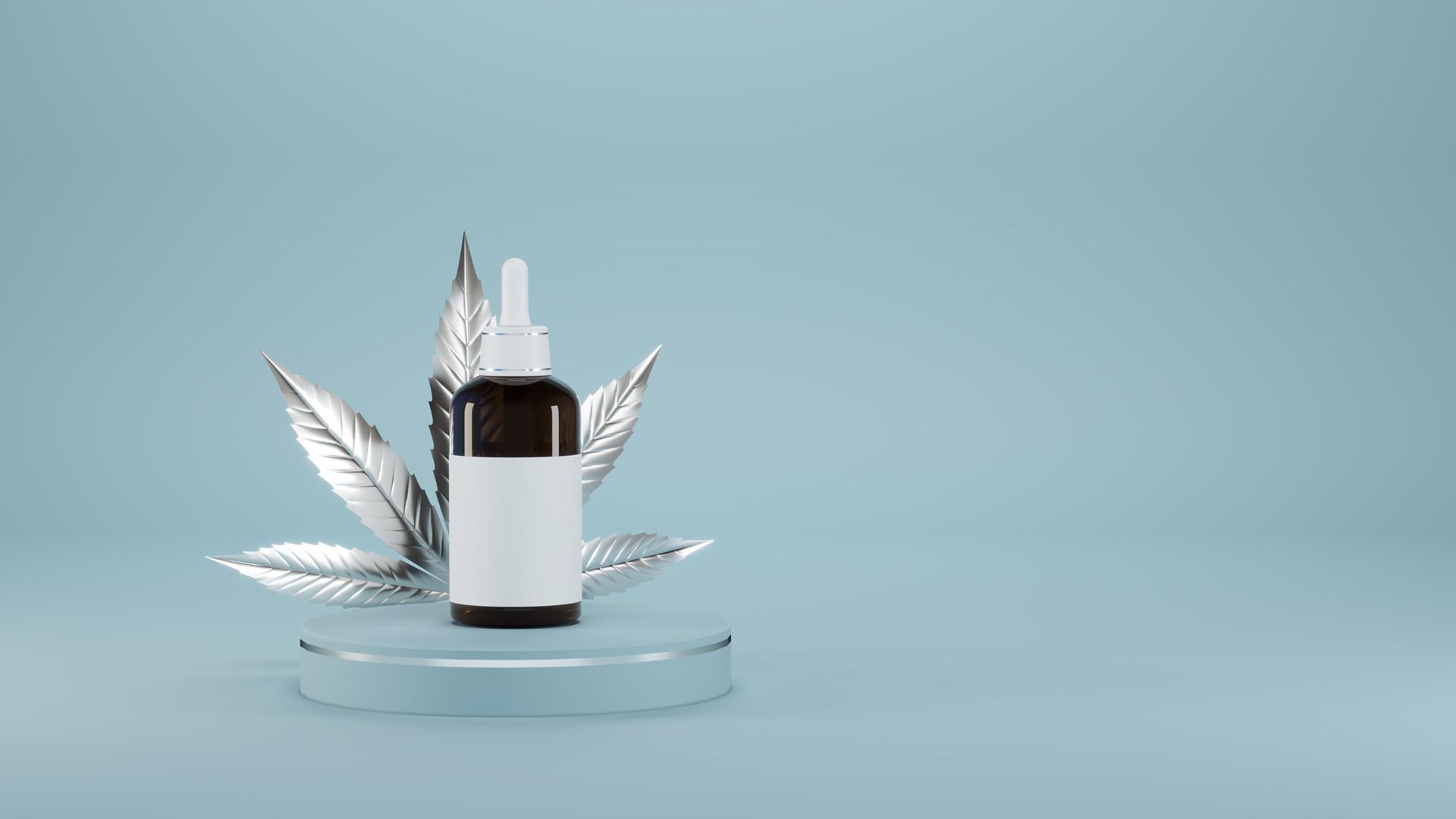Now accepting clients for New York, Maryland, Delaware, and Missouri! Please contact us if you have questions.
Maximizing Cannabis Cultivation Efficiency: Expert Tips
Table of Contents
“Efficiency is doing things right; effectiveness is doing the right things.” – Peter Drucker
Understanding the importance of efficiency in cannabis cultivation is crucial for maximizing yields and profits. Whether you’re a seasoned cultivator or just starting out, implementing efficient practices can significantly impact the success of your cannabis cultivation endeavors.
Efficiency goes beyond simply growing cannabis plants. It involves optimizing every aspect of the cultivation process, from selecting the right cannabis cultivars and strains to managing mother plants and controlling costs. By focusing on efficiency, cultivators can ensure that their efforts translate into higher THC levels, increased production of minor cannabinoids, and overall better quality cannabis.
Technology plays a vital role in improving cultivation efficiency. From automated systems for irrigation and lighting control to advanced monitoring tools, harnessing technology allows cultivators to streamline processes, maximize efficiency, reduce manual labor, and achieve consistent results.
So let’s dig in!
Maximizing Cultivation Efficiency through Planning and Utilization
Efficient cannabis cultivation is crucial for maximizing production and ensuring high-quality yields. By implementing effective planning strategies, utilizing automation and smart systems, implementing proper crop rotation techniques, and analyzing data, cultivators can optimize space, resources, and operations to achieve optimal efficiency.
Effective planning strategies for optimizing space and resources
Space utilization plays a significant role in determining overall efficiency. Proper planning ensures that every square inch is utilized effectively. One strategy is to create a layout that maximizes the use of available space by incorporating vertical growing systems or utilizing tiered racks. This allows cultivators to grow more plants within a limited area.
Careful consideration should be given to plant height and the placement of equipment such as lighting fixtures and irrigation systems. By strategically positioning these elements, cultivators can minimize wasted space while providing adequate coverage for all plants.
Utilizing automation and smart systems for streamlined operations
Automation technology has revolutionized the way cannabis cultivation operations are managed. From automated lighting systems to advanced climate control mechanisms, these technologies streamline processes while reducing human error.
Automated irrigation systems ensure that plants receive precise amounts of water without over or under-watering. This not only saves time but also conserves water resources.
Smart monitoring systems equipped with sensors provide real-time data on environmental conditions such as temperature, humidity levels, CO2 concentration, and light intensity. By closely monitoring these factors, cultivators can make informed decisions regarding adjustments required for optimal plant growth.
Implementing proper crop rotation techniques for increased efficiency
Crop rotation is an essential practice in cannabis cultivation that helps prevent the buildup of pathogens in the soil while maximizing nutrient availability. By rotating different cultivars or strains in designated areas over time, growers can reduce the risk of disease outbreaks caused by specific pathogens targeting particular plant varieties.
Moreover, crop rotation facilitates better nutrient uptake as different plant species have varying nutritional requirements. This practice helps maintain soil health and fertility, resulting in improved yields and overall cultivation efficiency.
Importance of data analysis in identifying areas for improvement
Data analysis plays a crucial role in identifying areas where cultivation efficiency can be enhanced. By regularly collecting and analyzing data related to plant growth, yield, environmental conditions, and resource usage, cultivators gain valuable insights into their operations.
For example, analyzing yield data can help identify cultivars that consistently produce high-quality yields while also highlighting potential issues such as nutrient deficiencies or pest infestations. This information enables growers to make informed decisions regarding crop selection and cultivation practices.
By utilizing technology-driven tools for data collection and analysis, cultivators can streamline the process of identifying inefficiencies and implementing corrective measures promptly.
Scaling Your Cannabis Cultivation Business with Efficiency
Expanding a cannabis cultivation business is an exciting venture, but it comes with its own set of challenges. One of the key considerations when scaling up is maintaining efficiency throughout the process.
Strategies for expanding production while maintaining efficiency
As your cannabis business grows, it’s essential to implement strategies that allow you to expand production without sacrificing efficiency. Here are some effective approaches:
Leveraging economies of scale: By increasing the size of your operation, you can take advantage of economies of scale to reduce costs and increase output. This involves investing in larger indoor growing facilities or optimizing existing ones to accommodate more plants.
Automation: Implementing automation technologies can significantly improve efficiency in various aspects of cultivation. Automated systems for irrigation, lighting control, and environmental monitoring can streamline operations and minimize human error.
Optimizing growth areas: Analyze your cultivation space to identify any underutilized areas or inefficiencies that may be hindering productivity. By optimizing these growth areas, such as fine-tuning lighting setups or adjusting temperature and humidity levels, you can maximize plant growth potential.
Utilizing stem cuttings: Instead of relying solely on seeds for new plant growth, consider using stem cuttings from healthy mother plants. This method ensures genetic consistency and reduces the time required for plants to reach their desired growth stage.
Ensuring consistent quality control as your business grows
Maintaining consistent quality control is crucial when scaling up your cannabis cultivation business to meet market demands. Here’s how you can achieve this:
Standard operating procedures (SOPs): Develop comprehensive SOPs for each stage of the cultivation process to ensure consistency across all operations. These SOPs should cover everything from planting and nutrient management to pest control and harvesting techniques.
Regular monitoring and testing: Implement a rigorous monitoring and testing program to ensure that your plants are healthy and free from contaminants. Regularly test soil, water, and plant samples for nutrient levels, pH balance, and the presence of any harmful substances.
Training and education: Invest in training programs for your growers to enhance their skills and knowledge. Educated growers can better identify potential issues early on, leading to improved quality control.
Overcoming challenges when scaling up cannabis cultivation
Scaling up cannabis cultivation is not without its challenges. Here are some common obstacles you may encounter:
Security concerns: As your business expands, security becomes increasingly important to protect your valuable crops. Consider investing in a reliable security service that includes surveillance systems, access controls, and alarm systems.
Market demand fluctuations: The cannabis market can be volatile, with demand fluctuating throughout the year. To overcome this challenge, diversify your product offerings to cater to different market segments or consider establishing partnerships with other businesses to ensure a steady customer base.
Maintaining optimal grow ratios: As the number of plants increases, it becomes crucial to maintain proper grow ratios for optimal yield and quality. Regularly assess plant density and adjust spacing accordingly to prevent overcrowding or underutilization of space.
Making the Most Efficient Use of Cannabis Farming Utilities
Optimizing water usage through advanced irrigation methods.
Cannabis growers understand the importance of water in cultivating healthy plants. However, it is crucial to use this resource efficiently to minimize waste and reduce environmental impact. By implementing advanced irrigation methods, cannabis cultivators can optimize their water usage and improve overall efficiency.
One effective approach is the use of drip irrigation systems. These systems deliver water directly to the plant’s root zone, minimizing evaporation and ensuring that each plant receives an adequate amount of water. This method not only conserves water but also prevents overwatering, which can lead to nutrient deficiencies and other plant health issues.
Another technique that cannabis growers can employ is the implementation of smart irrigation controllers. These controllers utilize sensors and weather data to adjust watering schedules based on actual plant needs and environmental conditions. By avoiding unnecessary watering during periods of rainfall or high humidity, cultivators can significantly reduce water waste.
Reducing waste by implementing recycling and composting systems.
In any agricultural operation, waste management plays a vital role in sustainability. Cannabis cultivation is no exception. Implementing recycling and composting systems can help reduce waste while providing valuable resources for future use.
One option for cannabis growers is setting up a composting system for organic waste materials such as trimmings, leaves, and stalks. Composting these materials turns them into nutrient-rich soil amendments that can be used to enhance plant growth in subsequent cycles. This closed-loop approach not only reduces waste but also minimizes the need for external inputs like synthetic fertilizers.
Recycling programs should be established within cultivation facilities to handle non-organic waste materials such as plastic containers or packaging materials. By partnering with local recycling centers or using specialized services catered to cannabis-related products, growers can divert these items from landfills and contribute to a more sustainable industry.
Managing nutrient delivery systems to minimize resource consumption.
Efficient nutrient management is crucial for cannabis cultivation. By carefully managing nutrient delivery systems, growers can minimize resource consumption while still providing plants with the necessary elements for healthy growth.
One approach is to use precision dosing systems that deliver nutrients in a targeted manner. These systems allow growers to precisely control the amount and timing of nutrient solutions provided to each plant, avoiding wasteful over-application. By tailoring nutrient delivery to the specific needs of individual plants, cultivators can optimize resource utilization and maximize yields.
Furthermore, incorporating organic fertilizers into cultivation practices can also contribute to resource efficiency. Organic fertilizers provide slow-release nutrients that are gradually released into the soil, reducing the risk of leaching or runoff. This not only minimizes environmental impact but also ensures that nutrients are efficiently absorbed by the plants.
Incorporating sustainable energy sources into cultivation operations.
Energy consumption is a significant consideration in cannabis cultivation facilities. To enhance efficiency and reduce reliance on traditional energy sources, it is essential for growers to incorporate sustainable energy alternatives into their operations.
Solar panels can be installed on facility rooftops or nearby land areas to harness renewable solar energy. This clean energy source can power various aspects of cultivation operations, including lighting systems, ventilation, and irrigation pumps. By utilizing solar power, growers can significantly reduce their carbon footprint and operating costs in the long run.
Enhancing Energy Efficiency in Cannabis Cultivation: The Role of LED Lights
LED lights have revolutionized the way cannabis is cultivated, offering numerous benefits over traditional lighting systems. Not only do they provide significant energy savings and reduced costs, but they also allow for optimal light spectrum and intensity to maximize plant growth.
Benefits of using LED lights over traditional lighting systems
LED lights offer several advantages that make them highly suitable for cannabis cultivation. Unlike conventional lighting systems such as high-pressure sodium (HPS) or metal halide (MH) lamps, LED lights are more efficient in converting electricity into usable light while minimizing heat production. This high efficiency often results in substantial energy savings and reduced electricity bills for growers.
LED lights have a longer lifespan compared to traditional bulbs, reducing maintenance costs and the need for frequent replacements. They are also more durable and resistant to damage from vibrations or temperature fluctuations, making them ideal for indoor cultivation environments.
How LED lights contribute to energy savings and reduced costs
The energy-saving potential of LED lights is remarkable. Compared to HPS or MH lamps, LEDs consume significantly less electricity while delivering a similar amount, or even better light output. This means that growers can achieve the same level of plant growth with lower energy consumption.
Keep in mind, since LEDs produce less heat than traditional lighting systems, there is a reduced need for cooling equipment such as air conditioning units or exhaust fans. This not only saves on energy costs but also lowers overall operational expenses.
Optimizing light spectrum and intensity for maximum plant growth
One of the key advantages of LED lights is their ability to provide precise control over the light spectrum emitted. Different wavelengths of light have varying effects on plant growth stages like vegetative growth and flowering. With LEDs, growers can tailor the light spectrum according to their specific cultivation goals, resulting in healthier and more productive plants.
LED lights also allow for adjustable light intensity, ensuring that plants receive the optimal amount of light for photosynthesis. By fine-tuning the light intensity, growers can promote vigorous growth while minimizing the risk of light stress or damage to the plants.
Evaluating different LED lighting options available in the market
There are various options available in the market. It is essential to consider factors such as wattage, color spectrum, and brand reputation before making a decision. Here are some popular LED lighting options worth exploring:
Kind LED Grow Lights: Known for its high-quality LED grow lights with a wide range of wattages and customizable spectra.
Scynce LED: Offers energy-efficient LED lights specifically designed for indoor cannabis cultivation, with excellent reviews from growers.
Horticulture Lighting Group (HLG): Specializes in full-spectrum LED panels that mimic natural sunlight, promoting healthy plant development.
By carefully evaluating these options and comparing their features, growers can select the most suitable LED lighting solution that meets their efficiency requirements and budget constraints.
The Importance of Energy Monitoring for Optimal Cannabis Cultivation Efficiency
Monitoring energy consumption is crucial for achieving optimal cannabis cultivation efficiency. By keeping a close eye on energy use, cultivators can identify inefficiencies and implement strategies to reduce costs while maximizing productivity. We will provide tips on implementing an effective energy monitoring system.
Monitoring Energy Consumption to Identify Inefficiencies and Reduce Costs
Effective cannabis cultivation requires a significant amount of energy, from lighting systems to ventilation and climate control. However, without proper monitoring, energy consumption can easily spiral out of control, leading to unnecessary expenses. By closely monitoring energy usage, cultivators gain valuable insights into where inefficiencies lie within their operations.
One way to monitor energy consumption is through the use of smart meters or submeters that track electricity usage in real-time. These devices provide detailed data on how much energy is being used by different components of the cultivation facility. By analyzing this information, cultivators can pinpoint areas where excessive energy is being consumed and take proactive measures to rectify the issue.
The Role of Energy Monitoring Tools in Tracking Usage Patterns
Energy monitoring tools play a vital role in tracking usage patterns within a cannabis cultivation facility. These tools provide cultivators with comprehensive data that allows them to understand when and where energy is being used most intensively.
For instance, advanced software platforms can collect data from various sensors installed throughout the facility, such as temperature sensors, light intensity sensors, and power monitors. This data is then analyzed to create visualizations and reports that highlight trends and patterns in energy consumption over time.
By examining these usage patterns, cultivators can make informed decisions about optimizing their operations. For example:
Adjusting lighting schedules based on peak periods of electricity demand
Fine-tuning climate control systems to minimize energy waste
Identifying equipment malfunctions or inefficiencies that may be causing excessive energy consumption
Benefits of Real-Time Data Analysis for Making Informed Decisions
Real-time data analysis is a game-changer in the world of cannabis cultivation. By leveraging the power of technology, cultivators can access up-to-the-minute information about their energy usage and make informed decisions on the spot.
With real-time data analysis, cultivators can:
Identify immediate opportunities for energy savings: By spotting sudden spikes in energy consumption, cultivators can quickly investigate and address any issues that may be causing wastefulness.
Optimize resource allocation: Real-time data allows cultivators to allocate resources more efficiently by identifying areas where energy is being underutilized or overutilized.
Improve overall productivity: By continuously monitoring energy consumption and making necessary adjustments, cultivators can optimize their operations to achieve higher yields while reducing costs.
Tips on Implementing an Effective Energy Monitoring System
Implementing an effective energy monitoring system requires careful planning and consideration. Here are some tips to help you get started:
Choose the right tools: Select energy monitoring tools that align with your specific needs and budget. Consider factors such as scalability, ease of use, compatibility with existing systems, and data accuracy.
Install sensors strategically: Place sensors in critical areas throughout your facility to capture accurate data on energy usage.
Research Insights on Cannabis Cultivation Efficiency by UConn Researchers
Key Findings from Research Conducted by UConn Researchers
The cannabis industry has experienced significant growth in recent years, driven by the increasing demand for cannabinoids such as CBD. To meet this demand, researchers at the University of Connecticut (UConn) conducted a comprehensive study to explore ways to enhance cannabis cultivation efficiency. Their findings shed light on several key factors that can greatly impact the productivity and quality of cannabis crops.
One of the major discoveries was the influence of environmental factors on cultivation efficiency. The researchers found that controlling temperature, humidity, and lighting conditions had a substantial effect on plant growth and cannabinoid production. By optimizing these parameters, cultivators can create an ideal, controlled environment for their plants to thrive.
The study revealed the importance of genetic traits in achieving higher efficiency levels. Through careful analysis of various cannabis strains, UConn researchers identified specific genes associated with desirable traits such as increased cannabinoid content or faster flowering times. This knowledge allows breeders to selectively propagate plants with these advantageous characteristics, leading to improved yields and reduced cultivation time.
Impact of Environmental Factors on Cannabis Cultivation Efficiency
Environmental factors play a crucial role in determining the success of cannabis cultivation efforts. Temperature control is particularly important, as extreme heat or cold can hinder plant growth and affect cannabinoid synthesis. Maintaining an optimal temperature range between 70-85°F (21-29°C) promotes healthy development and maximizes yield potential.
Humidity levels also significantly impact cultivation efficiency. High humidity increases the risk of mold and fungal diseases, while low humidity can cause stress to plants and reduce resin production. Maintaining a relative humidity range between 40-60% during vegetative stages and lowering it to 30-40% during flowering stages is recommended for optimal results.
Proper lighting is another critical factor in maximizing efficiency. Cannabis plants require sufficient light intensity for photosynthesis and cannabinoid production. Utilizing full-spectrum LED lights or high-pressure sodium (HPS) lamps with the appropriate light spectrum can boost plant growth and resin production, ultimately saving energy and improving overall efficiency.
Innovative Techniques Recommended by Experts for Improved Efficiency
Based on their research findings, UConn researchers recommend several innovative techniques to enhance cannabis cultivation efficiency. These methods have shown promising results in increasing yields and optimizing resource utilization:
Hydroponics: Growing cannabis in a hydroponic system allows for precise control over nutrient delivery, water usage, and pH levels. This method eliminates the need for soil and enhances nutrient absorption, resulting in faster growth rates and higher cannabinoid content.
Vertical farming: Vertical farming involves stacking multiple layers of plants vertically, utilizing limited space more efficiently. By using this technique, cultivators can significantly increase crop yields without expanding their footprint.
Genetic modification: Through genetic engineering techniques, specific genes responsible for desirable traits can be introduced into cannabis plants. This approach enables the development of strains with enhanced cannabinoid profiles or improved resistance to pests and diseases.
Exploring the Future of Cannabis Cultivation Based on Research Insights
The research conducted by UConn researchers provides valuable insights into the future of cannabis cultivation. By understanding the impact of environmental factors and harnessing innovative techniques, cultivators can significantly improve efficiency levels in their operations.
Achieving Maximum Efficiency in Cannabis Cultivation
You’ve now learned about the key strategies and insights to achieve maximum efficiency in cannabis cultivation. By maximizing planning, scaling your agriculture business, utilizing farming utilities effectively, implementing energy-efficient LED lights, monitoring energy consumption, and staying informed with research insights, you’re well on your way to optimizing your cannabis cultivation operations.
To take it a step further and ensure long-term success, it’s crucial to continuously educate yourself on the latest advancements and best practices in the industry. Stay connected with industry experts, attend conferences and workshops, and join online communities where you can exchange knowledge and learn from others’ experiences. Embrace innovation and adapt new technologies that can further streamline your cultivation processes.
Remember, efficiency is not a one-time achievement but an ongoing journey. By consistently striving for improvement and embracing sustainable practices, you’ll not only increase productivity but also contribute to the overall sustainability of the cannabis industry.
FAQs – Efficiency in Commercial Marijuana Cultivation
How can I optimize water usage in cannabis cultivation?
In order to optimize water usage in cannabis cultivation, consider implementing drip irrigation systems or other efficient watering techniques such as hydroponics or aeroponics. These methods minimize water waste by delivering water directly to the roots of plants while reducing evaporation.
What are some effective pest control methods for cannabis crops?
Integrated Pest Management (IPM) is a recommended approach for pest control in cannabis cultivation. This method focuses on prevention through regular monitoring of plants, identifying pests early on, using beneficial insects or biological controls when possible, practicing proper sanitation measures, and employing targeted pesticide applications as a last resort.
How can I improve ventilation in my indoor cannabis grow facility?
To improve ventilation in an indoor grow facility, ensure proper air circulation by installing fans strategically throughout the space. Consider utilizing exhaust fans near heat-generating equipment or areas prone to humidity buildup. Incorporating carbon filters will help remove odors while maintaining adequate airflow.
What are the benefits of using organic fertilizers in cannabis cultivation?
Using organic fertilizers in cannabis cultivation offers several benefits. Organic fertilizers improve soil health, enhance nutrient availability, and promote microbial activity, leading to healthier plants. They also minimize the risk of chemical buildup in the soil and reduce environmental impact compared to synthetic fertilizers.
How can I optimize my lighting setup for cannabis cultivation?
To optimize your lighting setup, ensure that you provide the appropriate light intensity and spectrum for each stage of plant growth while avoiding energy intensive lighting systems. LED lights are a popular choice due to their energy efficiency and customizable spectrums. Position the lights at an optimal distance from the plants to avoid light burn or insufficient coverage.
Is it necessary to use a climate control system in cannabis cultivation?
A climate control system is highly recommended in cannabis cultivation as it helps maintain ideal temperature, humidity, and CO2 levels throughout different stages of plant growth. Consistency in these environmental factors promotes healthy plant development and maximizes yields.
What steps can I take to ensure compliance with legal regulations in cannabis cultivation?
To ensure compliance with legal cannabis industry regulations, familiarize yourself with local laws governing cannabis cultivation. Implement strict record-keeping practices, maintain proper security measures, and regularly review and update your standard operating procedures (SOPs) to align with regulatory requirements. It’s crucial to stay informed about any changes or updates in legislation that may affect your operations.
Unlock the Full Potential of Your Cannabis Cultivation with Our Comprehensive Efficiency Services!
Are you ready to revolutionize your cannabis cultivation operation? Our tailored efficiency services are designed to elevate your yields, boost profitability, and streamline your processes. With our expert guidance and innovative strategies, you can achieve remarkable results and position your business for long-term success.
🌱 Precision Planning: Maximize space and resources through effective planning strategies, ensuring every inch is optimized for growth.
🌿 Smart Systems: Harness the power of automation and smart monitoring to make real-time adjustments for optimal plant development.
🌱 Crop Rotation Mastery: Implement proper crop rotation techniques to prevent pathogens and enhance nutrient uptake, leading to improved yields and efficiency.
🌿 Data-Driven Insights: Utilize cutting-edge technology for data analysis and gain valuable insights to make informed decisions for higher productivity.
🌱 Sustainable Practices: Embrace sustainability by incorporating eco-friendly solutions like recycling and renewable energy sources.
🌿 LED Lighting Expertise: Explore the world of LED lighting with our guidance, leveraging energy-efficient solutions for healthier plants and cost savings.
🌱 Energy Monitoring Excellence: Keep energy consumption in check with our proven strategies, reducing costs while maintaining productivity.
🌿 Research-Backed Strategies: Stay ahead of the curve with insights from our grow consultants, tapping into the latest advancements for enhanced efficiency.
🌱 Compliance Confidence: Navigate legal regulations effortlessly with our expert advice, ensuring you're always on the right track.
Join us on this transformative journey toward unmatched efficiency and success in cannabis cultivation. Let's revolutionize your business together!
More To Explore

























